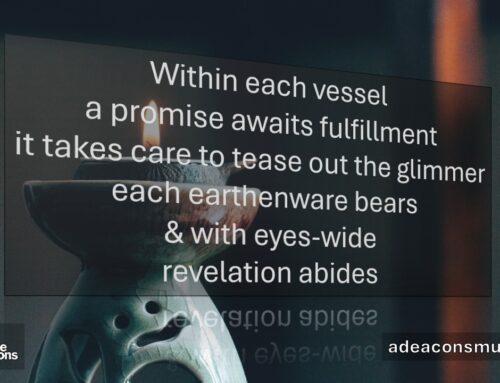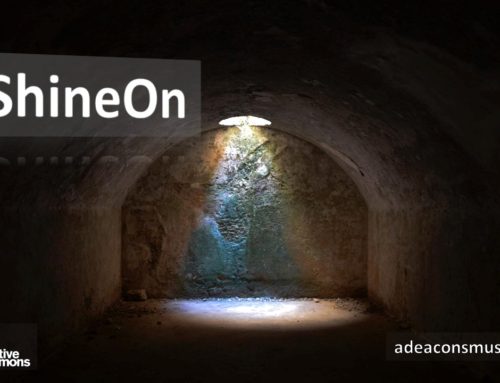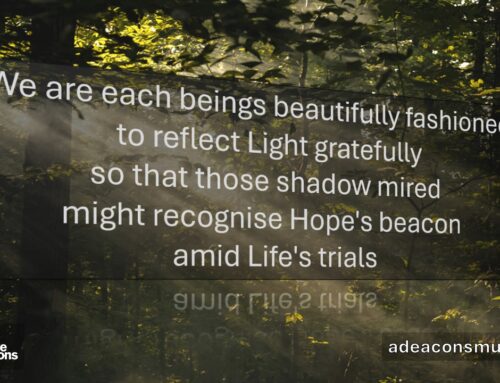I am most fortunate in the ministry in which I find myself. A significant portion of my role falls under the umbrella of leadership. Though that may seem like a broad-stroke, maybe even ambiguous, description, what it means to me is that I get to think about, reflect upon, engage in wonderful conversations and imagine practical ways to nurture great leadership in the church!
Connected – and just as importantly – I play with tangible ways that leadership links the church to the future. What, therefore, may we need to consider as the church imagines its place in society 10, 20 years from now and beyond? Just as fortunately, I recently had one of those great conversations … which of course got me to musing … Thus, the next few blogs about leadership & the church will explore the following:
Inside & Outside: No Longer the Same
The church, like many of its contemporaries such as not-for-profits and non-governmental agencies, and even government and universities, have long assumed that the way things were inside, were the way they were outside. Though physical walls divided institutional settings, all were connected in shaping the same culture. How and what they thought internally was the same externally. New ideas might indeed arise, but through a process of accommodation, compromise, the institutions of society formed and moulded us to define 'normal.'
There is no greater example of the shift away from the shared cultural identity then the gender expectations, which were often formed and defined by churches. Though there were some Christian faith communities endeavouring to draw the circle wider, the options were generally either male or female. In some cases, that definition continues to exist in many churches. Some faith communities have and are indeed re-examining what 'normal' means. Yet even then, there is often an underlying expectation that the Other will become like those inside the church. The world outside has indeed moved on … whereas outside/inside was previously bound in an endeavour to form a cohesive culture, inside/outside is becoming more and more of a division between generations and world views.
One of the most recent endeavours to explain this shift from gender binaries to gender fluidity is well explored by National Geographic. The mounting scientific and experiential learning has completely undermined previous cultural definitions. For many in Generations X, Y (Millennials), and Z, gender fluidity is understood as the norm. It is a continuum in which identity is 'authentic,' yet not fixed.
This discrepancy is just one example of the challenges the church must engage if it intends to understand those outside. In fact, I believe the challenge is to move away from the very frame of inside/outside and to see the interconnexions. If the church is called to share the Good News, therefore, leadership is going to have to develop innovative ways to not only translate generational and different world views, but it will need to walk a walk that clearly and confidently articulates a theology that embraces diversity as central to Creation. How the church shares the Good News, therefore, will be explored in the next installment of this leadership series …







Love the Drew Dudley TEDX Talk. So true, so relevant and so rooted in creating loving community. If we ourselves are grounded in love, we can, do, and will change the world we live in. Thanks for sharing Richard, needed that.
Thanks for taking the time to reflect Keith. Also happy to know it is well received! Do you think the video expands, complements the blog’s content? Always grateful to share and learn together!
Thanks Dea. Richard, I’ve been pondering the inside/outside dichotomy for some time and wondering how do we bridge the gap (or even should we be bridging the gap). There are two things that I’ve observed. First, those on the outside are not homogeneous in beliefs and values yet we in the church often have a tendency to generalize. Second visioning and leadership for those on the outside has to come from within themselves.
When I talk to congregants about why they want younger people in the church, what I most often hear is for the purpose of preserving the church the way it is or the way it was in the past – which makes my heart sad.
Personally I’m a believer in resurrection, and believe where ever the longing is nurtured there will be new life. I don’t see death of some of our traditions as a bad thing…. but rather as a way to nurture what might be.
I look forward to your Musing regarding “How faith communities might be enabled to embrace their ‘grassroots’ wisdom to dream into the church of the future”
BTW your Ted talk on leadership is great…. I value the notion of each one of us as leaders. It was a great antidote to the interview question I recently had which asked the question about how was the minister going to get more young people to attend Sunday worship.
Thanks so much for the conversation Catherine – so appreciated! The inside/outside metaphor – on one level – is intended to explore the modernist/post-modernist lens that is present culturally (https://en.wikipedia.org/wiki/Modernism & https://en.wikipedia.org/wiki/Postmodernism). These ways of seeing the world are very different and if sharing the Good News is about meeting people where they are at in order for them to hear a message that is about resurrection, then how do those of us inside adapt? Does that make sense?
Love that the video was helpful and I too am looking forward to this unfolding conversation, including the grassroots 🙂